Order Pleurotomariida Cox & Knight 1960
Superfamily Pleurotomarioidea Swainson, 1840
Family Portlockiellidae Batten, 1956
Genus Shansiella Yin 1932
Species carbonaria Norwood & Pratten, 1855
The type specimen, Shansiella altispiralis Yin, 1932, is lost. During an investigation and request for modern holotype photography, we found that the type specimens (No. 4788 and No. 4789) were missing from the collections of the Nanjing Institute of Geology and Palaeontology at the Chinese Academy of Sciences (2021, Yingyan Mao personal comm.).
Norwood & Pratten (1855) first named Pleurotomaria carbonaria from calcareous shale in Illinois and reported its occurrence as very rare. However, evidence exists that Conrad identified these as Turbo insectus in 1835. There are many problems with Conrad’s work, from his single sentence description, warped illustration, and the loss of the specimen. His long and detailed sentence describes the turbinate and protruding shape, coarse revolving ornamentation, flattened whorl tops, and rounded aperture opening that is half the shell height. However, the illustration is a wreck; it is too tall and has whorls that are too round. Also, the aperture position is too far below to represent what we know today as Shansiella.
If his specimen were available today and we could identify it as Shansiella, we would use the name Shansiella insectus. All was not lost; two of Conrad’s gastropod species names from 1835 are valid today, Turbo tabulatus (=Worthenia tabulata) and Stylifer primogenia (=Strobeus primogenius). Two out of three is not bad. [For more information, see: The Curious Case of Turbo insectus].
Workers continued to report on the genus over the years until Yin (1932) named Shansiella from a specimen in China, and Knight et al. (1960) placed P. carbonaria under the name. Yin’s work was the completion of a colleague, Y. T. Chao’s work on gastropods. Unfortunately, Yin reported that Chao was “taken by bandits” in 1929.
Karapunar et al. (2022) suggest Shansiella could be spongivorous, noting an encrusting of the sponge ?Chaetetes sp. on the selenizone on two specimens from the Finis Shale Member (Graham Formation) in Jack County, Texas (AMNH locality 5490); modern members of the Pleurotomariida consume sponges.
Shansiella from Armstrong County, Pennsylvania
The species is uncommon at SL-6553 (Brush Creek) and abundant at SL-6445 (Pine Creek). A few years of collecting resulted in over 100 specimens. The fissile limestone at the Pine Creek locale helps produce good specimens. The ornament is well preserved but difficult to recover in great detail, as the matrix still sticks between the cords.
Between the spiral corded ornamentation are proscline growth lines on the upper whorls and opisthocline lines on the bottom whorls. Weather exposure produces better specimens at SL-6445, where sun, rain, and wind may remove the adhering matrix between the cords. Some examples expose well-defined details in the aperture. The shells often retain a bright white high magnesium calcite or original aragonite due to the excellent preservation environment at both locations. A microscope can see the eroded specimens’ inner shell layer details.
At SL-6553, detailed Shansiella are nearly impossible to recover—the hard, brittle matrix sticks like glue to the outer shells. I deposited an exceptionally large gastropod (CG-0144, now CM 54698) with a Shansiella form, a well-worn surface, and a selenizone impression to the Carnegie Museum. It could be an example of gigantism in a Paleozoic gastropod species or a lucky individual that survived to old age. It is almost three times larger than my largest Shansiella specimen. No known research exists on this condition, so these theories are pure speculation.
Shansiella carbonaria Plates
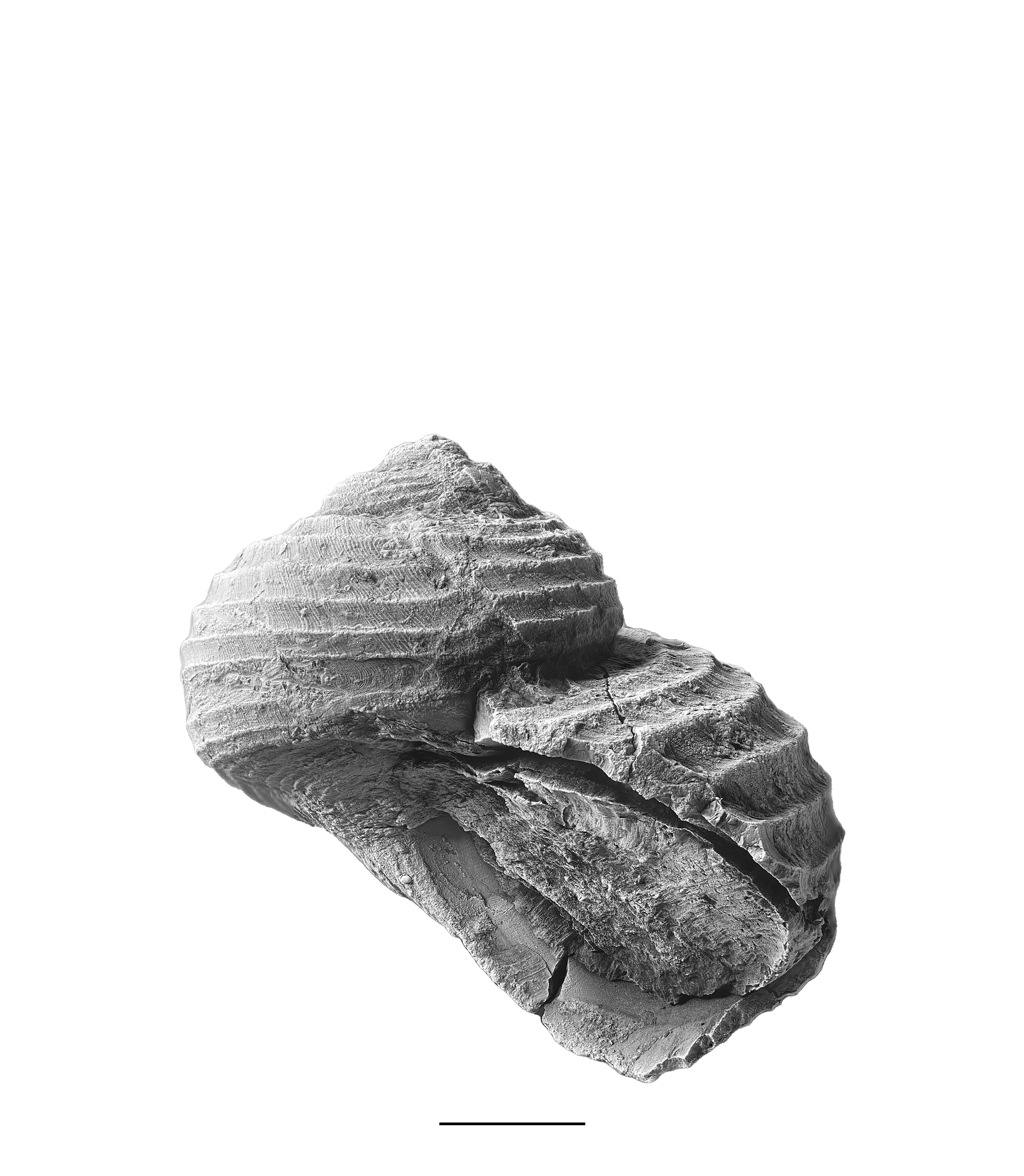
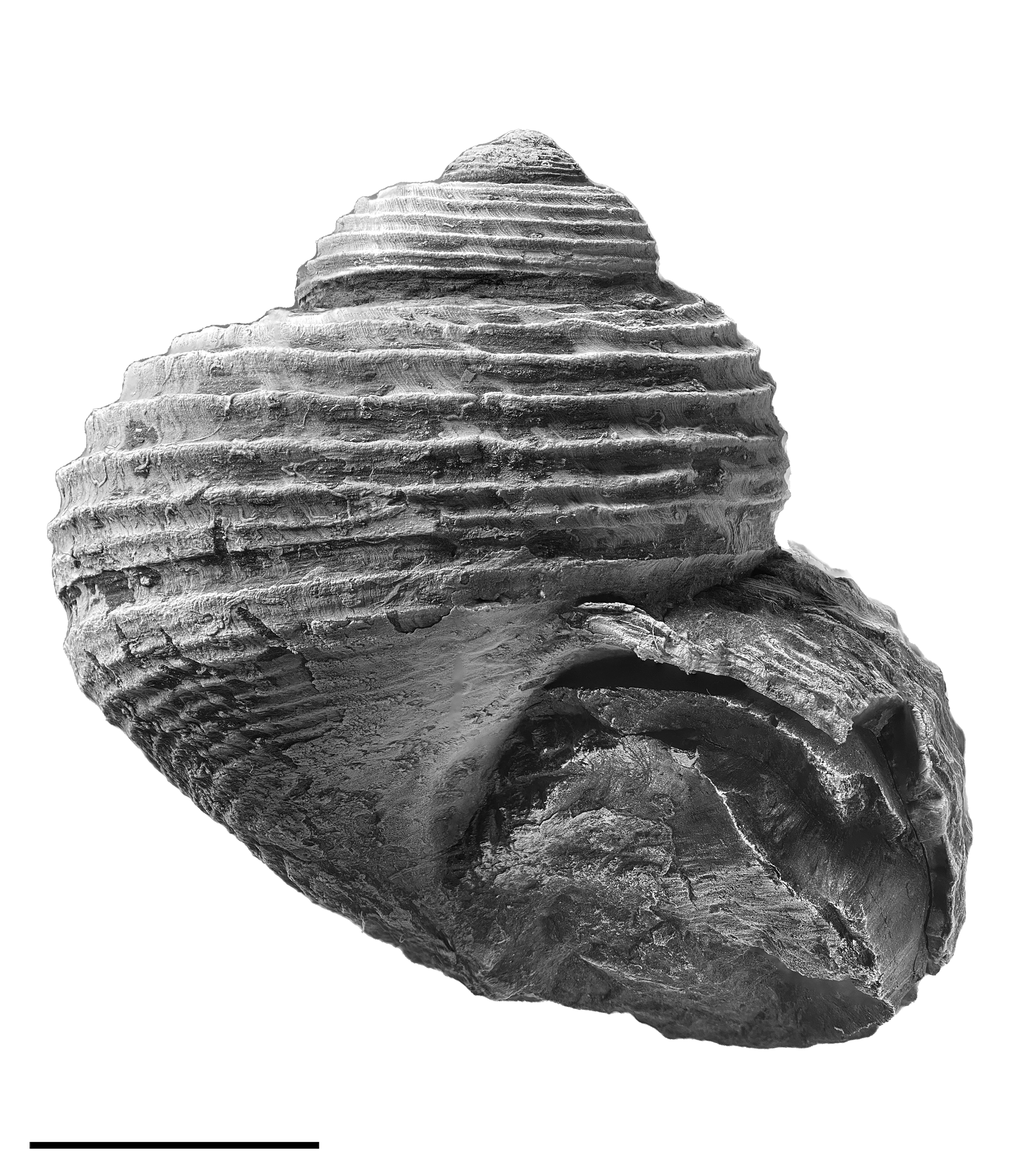
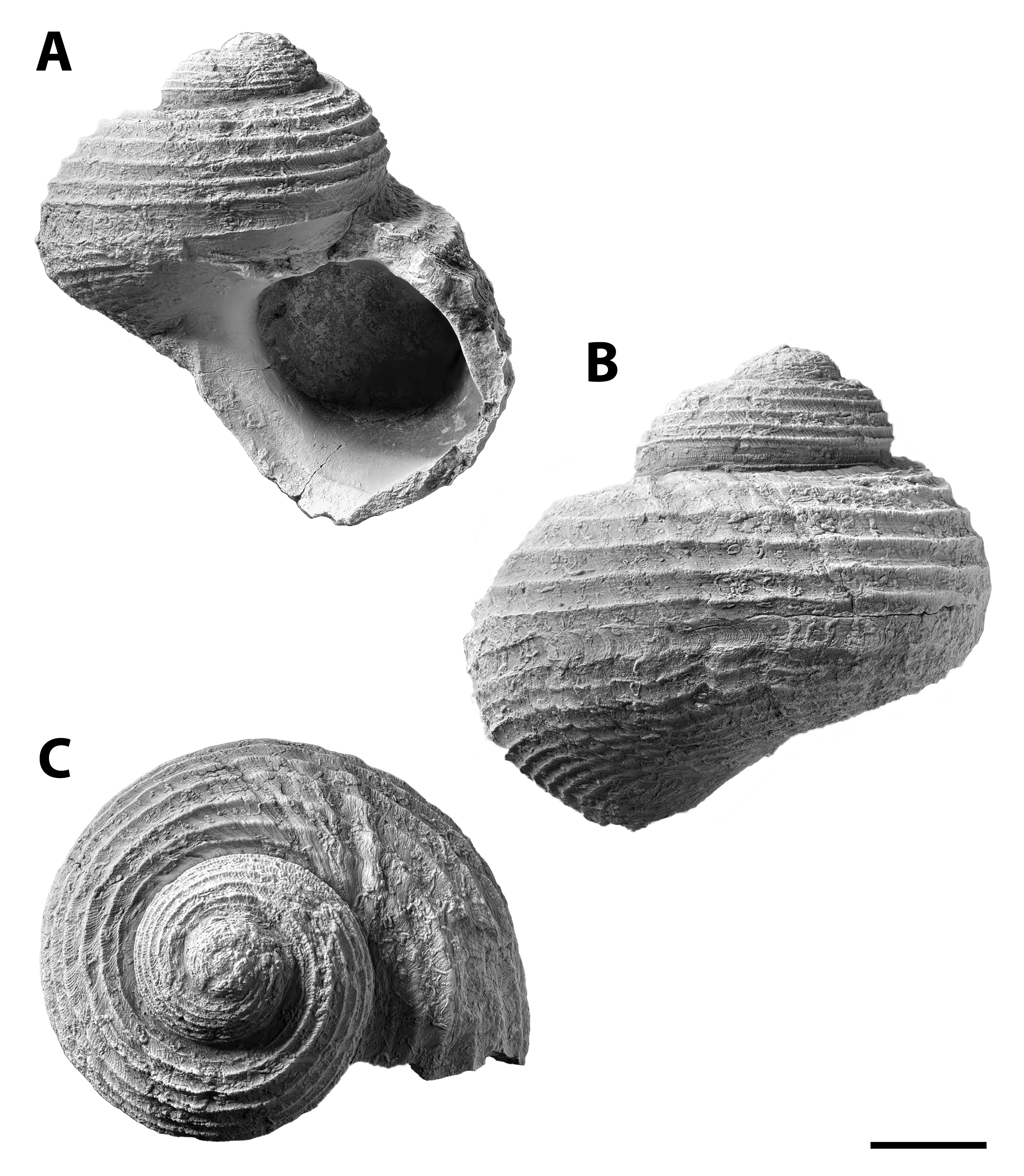
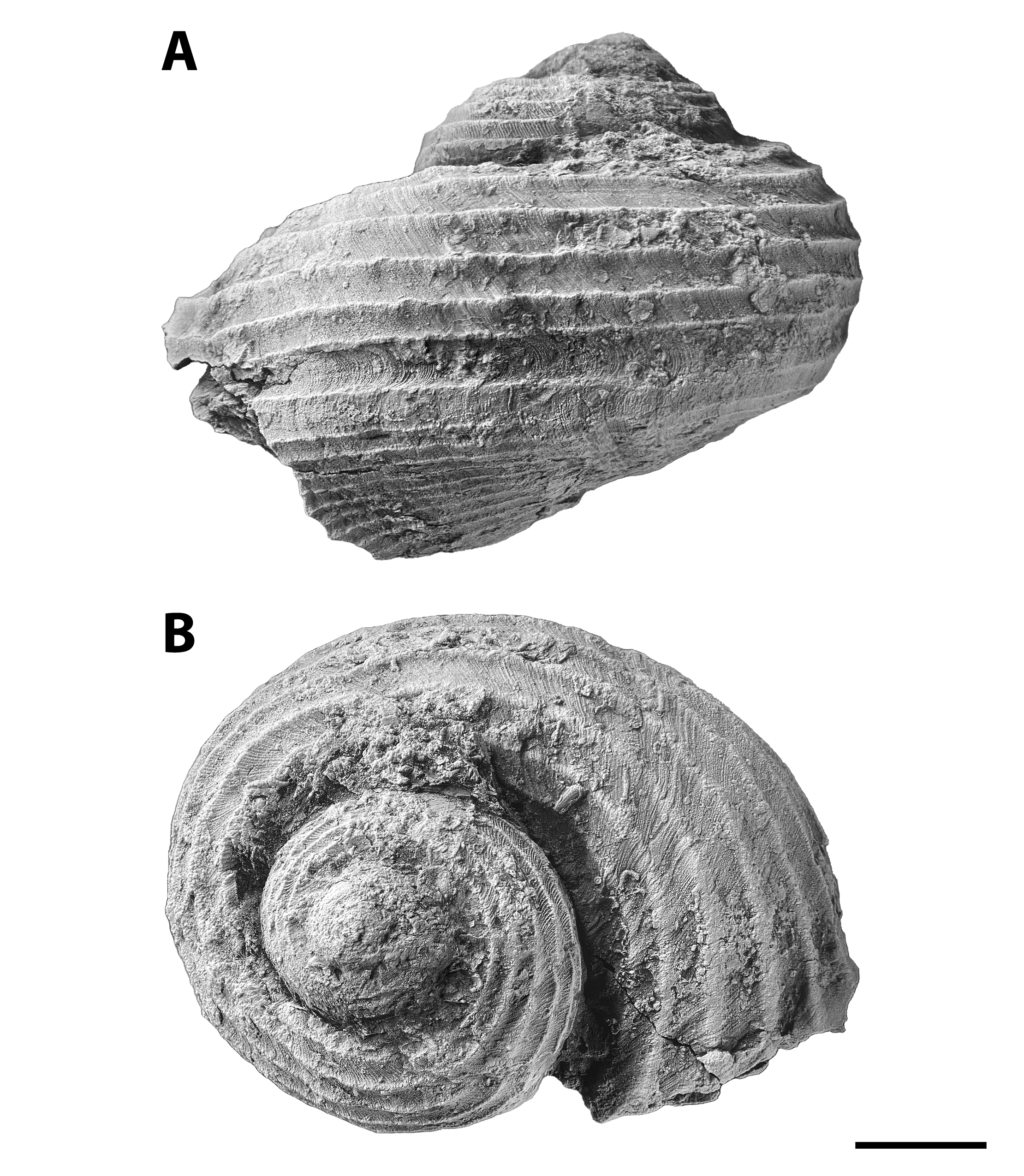
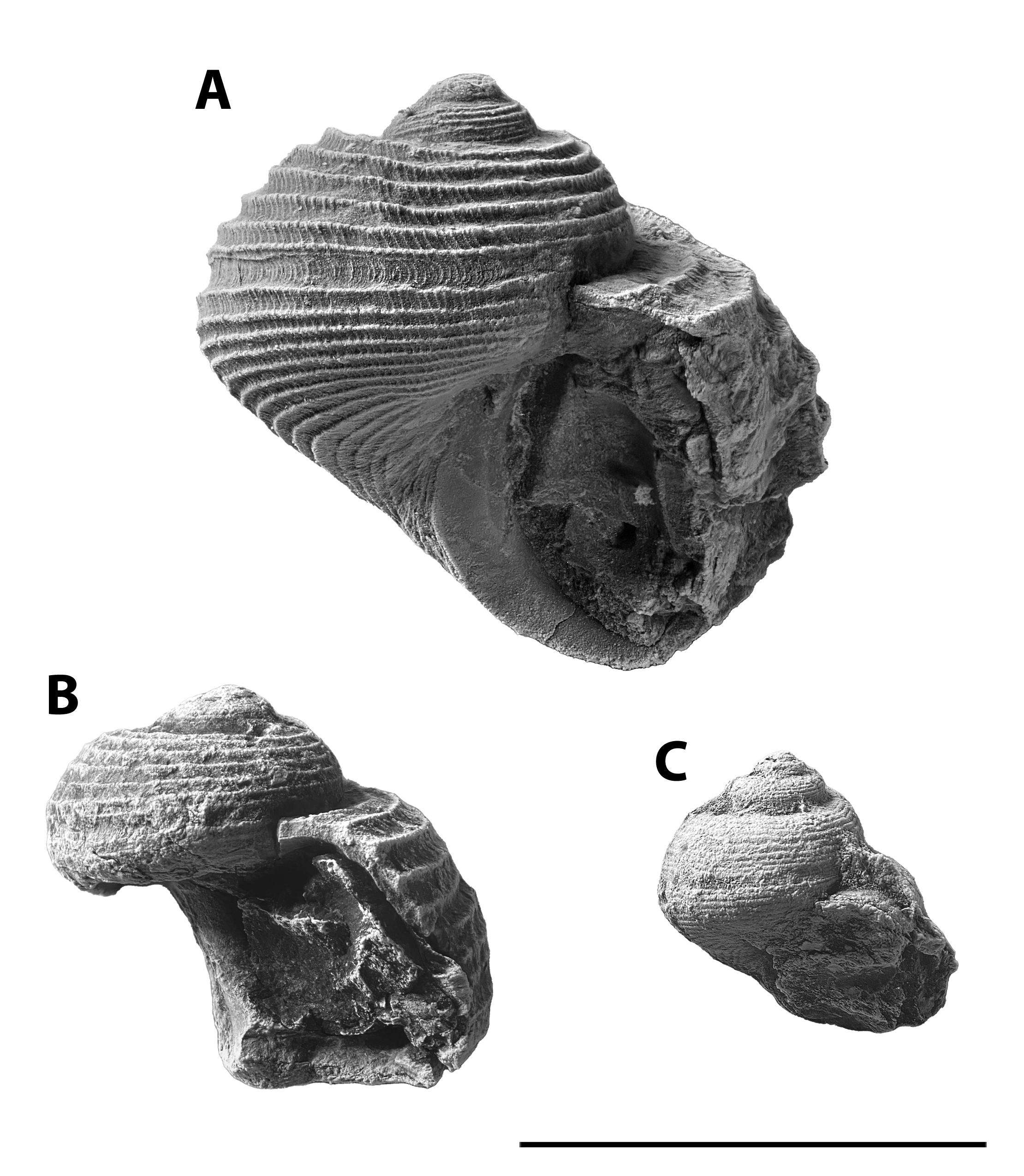
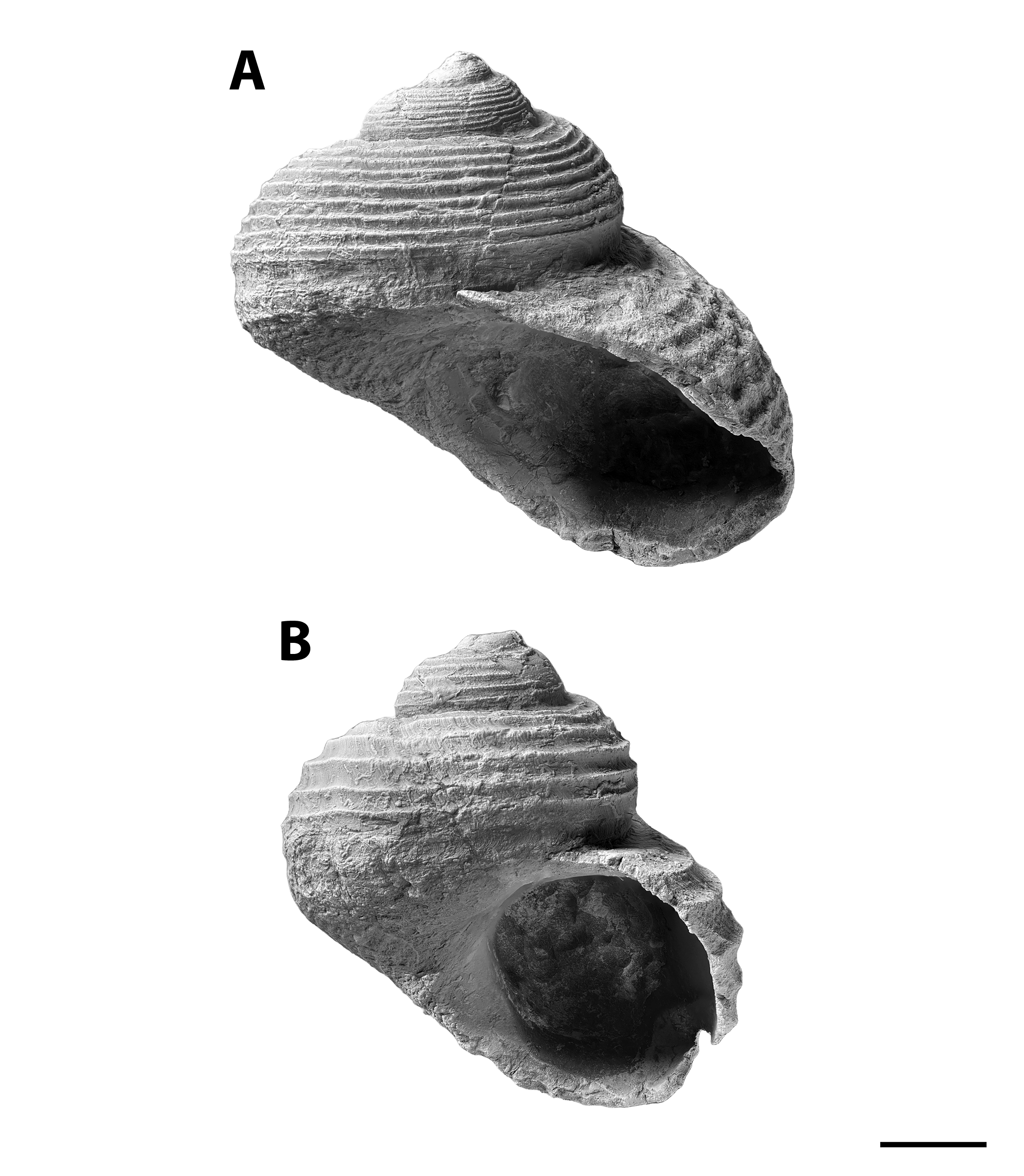
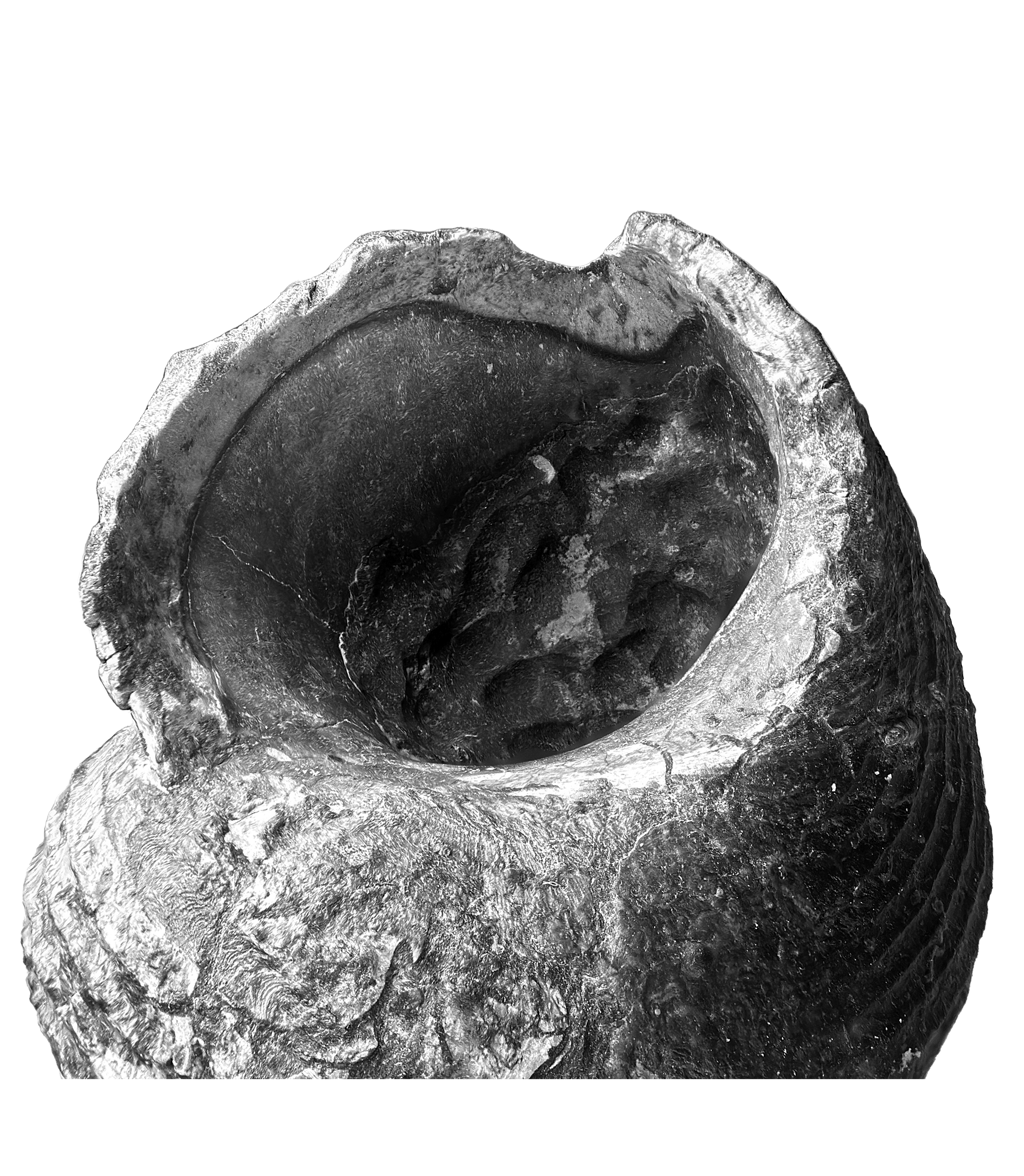

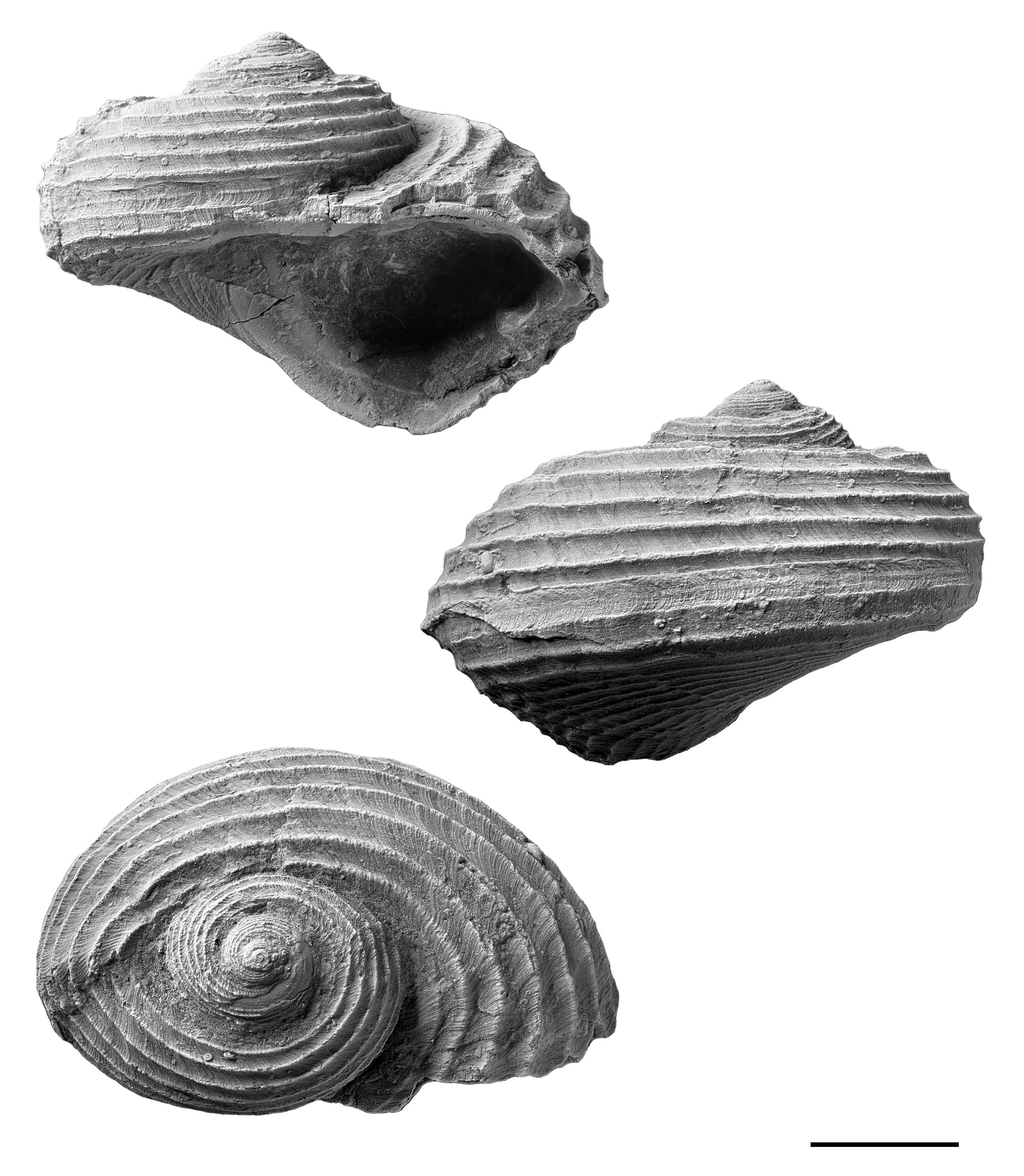
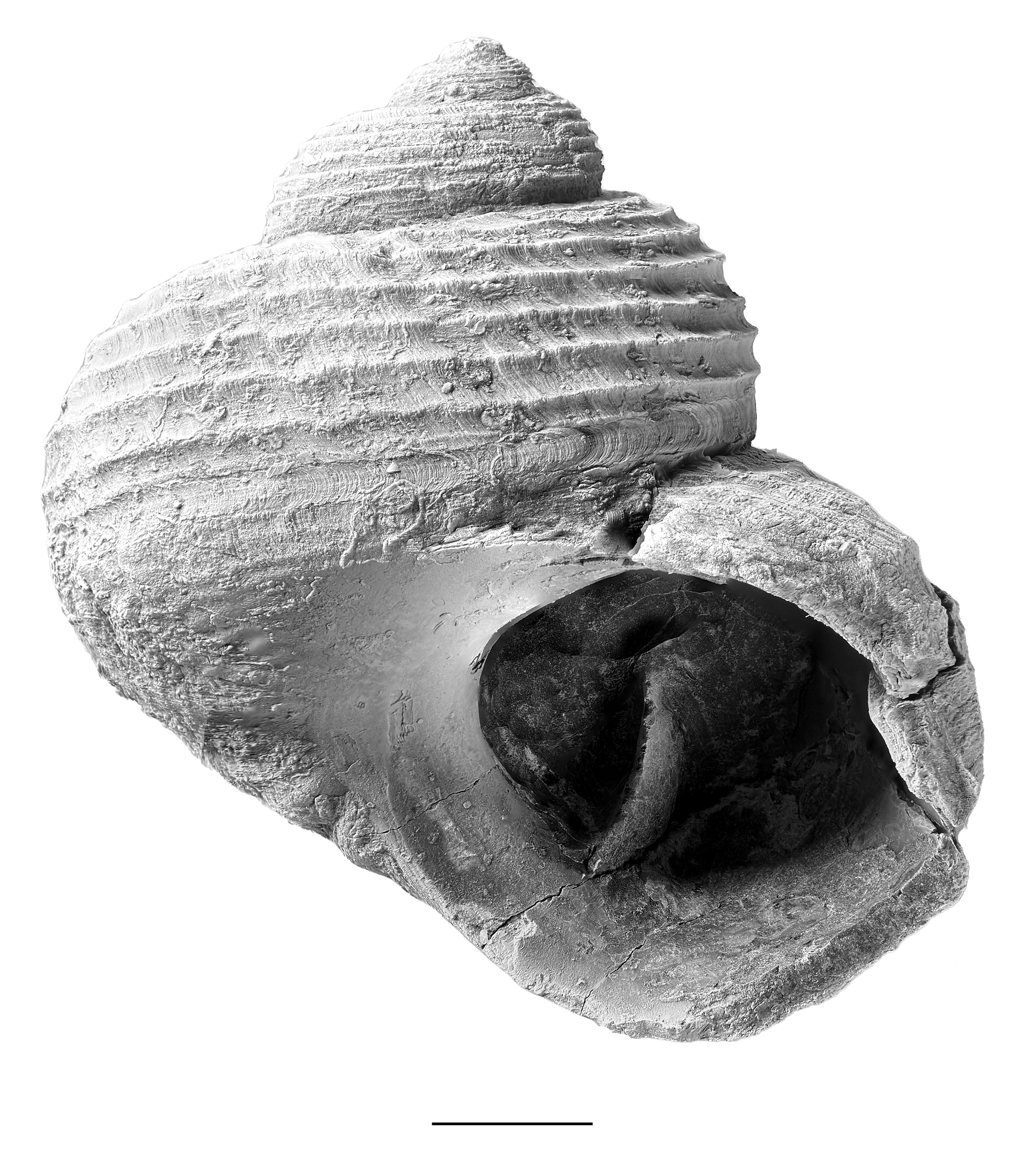
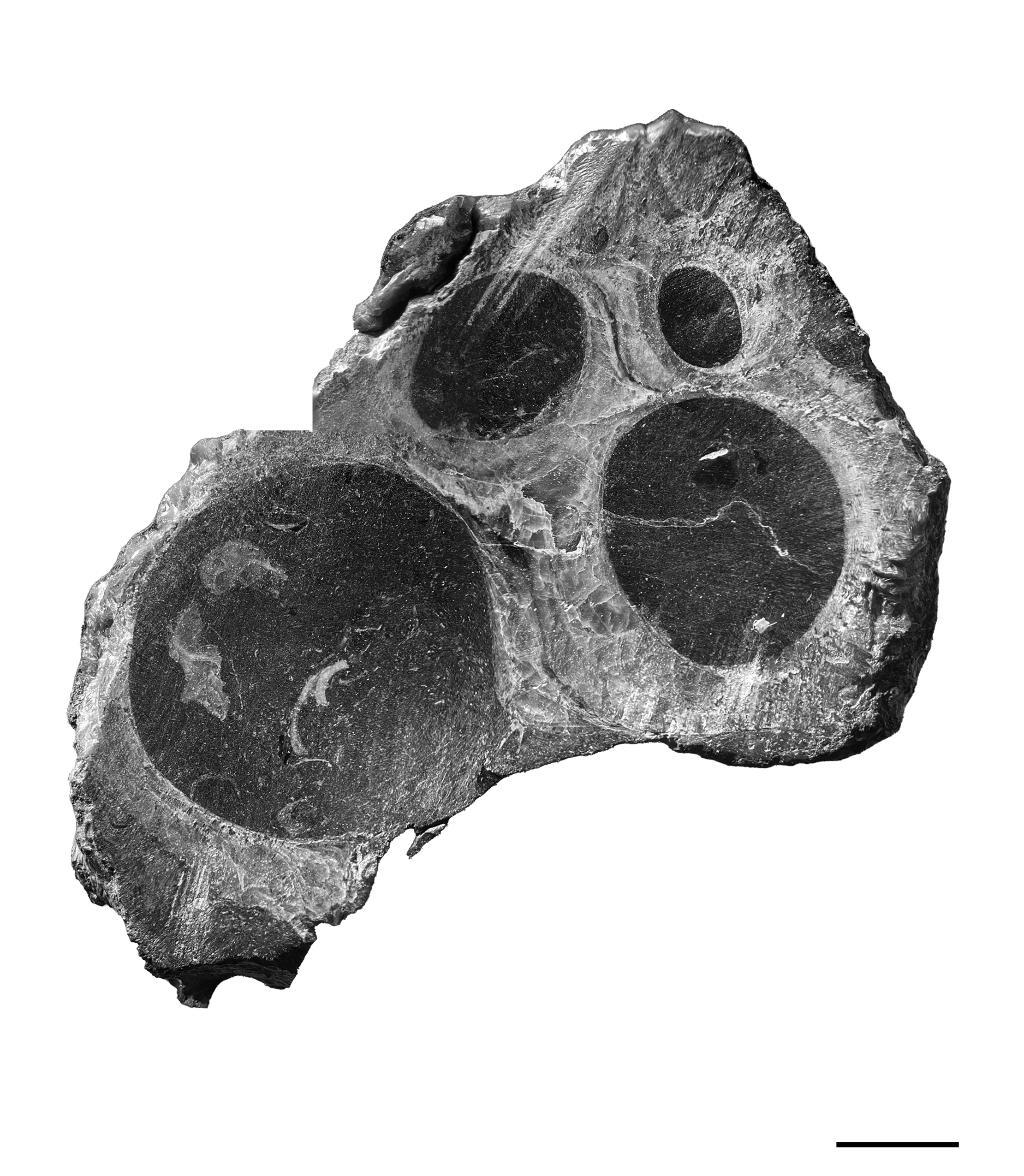
References
- Batten, R. L., 1956. Some new pleurotomarian gastropods from the Permian of west Texas, Journal of the Washington Academy of Sciences, 46(2): 42
- Cox, L. R., and Knight, J. B., 1960. Suborders of the Archaeogastropoda. Proceedings of the Malacological Society of London 33:262–264
- Norwood, J. G., and Pratten, H., 1855. Notice of fossils from the Carboniferous Series of the western states belonging to the genera Spirifer, Bellerophon, Pleurotomaria, Macrocheilus, Natica, and Loxonema, with descriptions of eight new characteristic species. Journal of the Academy of Natural Sciences of Philadelphia 3: pp. 71–77
- Swainson, W., 1840. A treatise on malacology; or the natural classification of shells and shell-fish. Longman, London, viii + 419 pp.
- Thomas, E. G., 1940. IV.—Revision of the Scottish Carboniferous Pleurotomariidae, Transactions of the Geological Society of Glasgow, Vol 20, pp 30–72
- Yin, T. H., 1932. Gastropoda of the Penchi and Taiyuan Series of North China, Palaeontologica Sinica, Series B.
- Yochelson, E. L., and Saunders, B. W., 1967. A bibliographic index of North American late Paleozoic Hyolitha, Amphineura, Scaphopda and Gastropoda. United States Geological Survey Bulletin Series 1210, pp. 1–271

Late Carboniferous Fossils from the Glenshaw Formation in Armstrong County, Pennsylvania
Preface | The Photographic Process
Localities: Locality SL 6445 Brush Creek limestone | Locality SL 6533 Pine Creek limestone
Bivalvia: Allopinna | Parallelodon | Septimyalina
Cephalopoda: Metacoceras | Poterioceras | Pseudorthoceras | Solenochilus
Gastropoda: Amphiscapha | Bellerophon | Cymatospira | Euphemites | Glabrocingulum | Meekospira | Orthonychia | Patellilabia | Pharkidonotus | Retispira | Shansiella | Strobeus | Trepospira | Worthenia
Brachiopoda: Cancrinella | Composita | Isogramma | Linoproductus | Neospirifer | Parajuresania | Pulchratia
